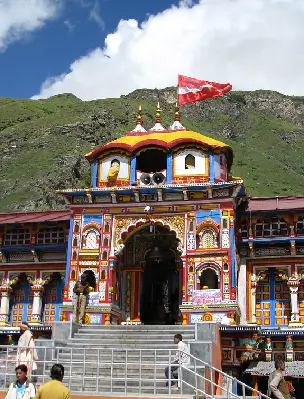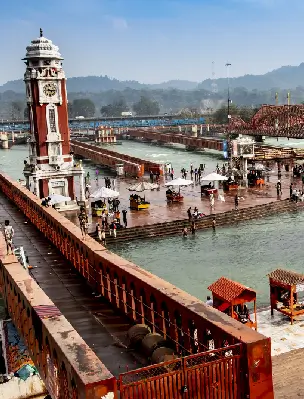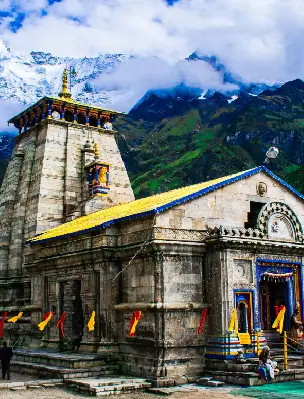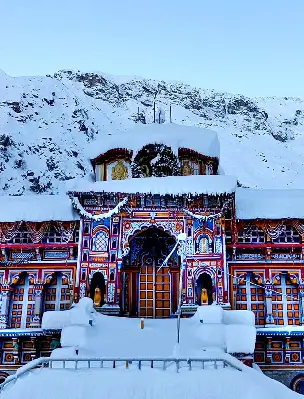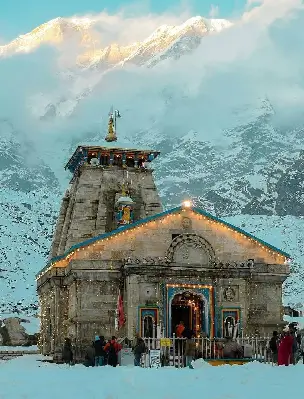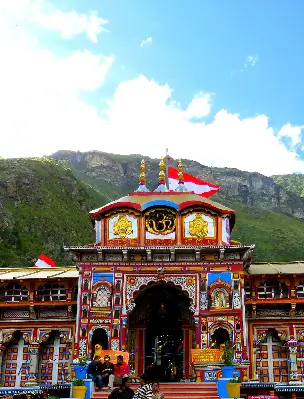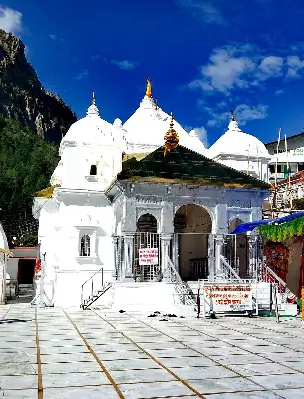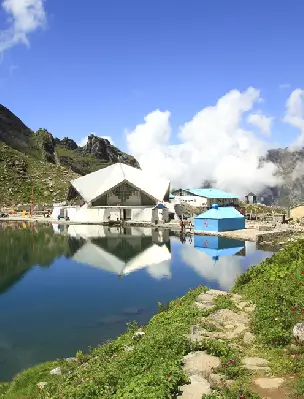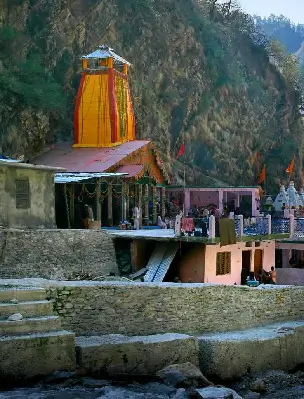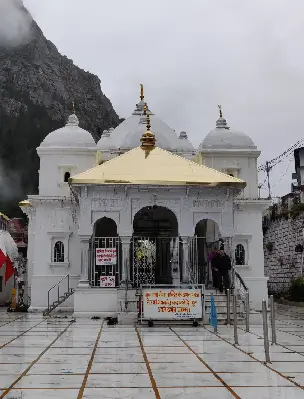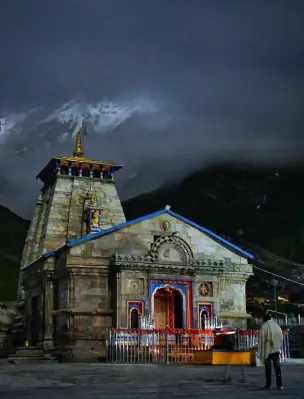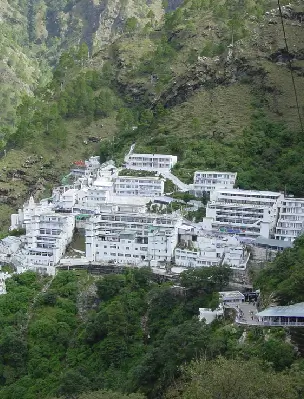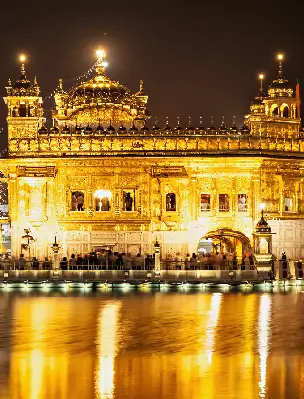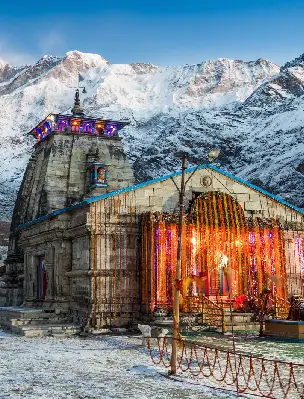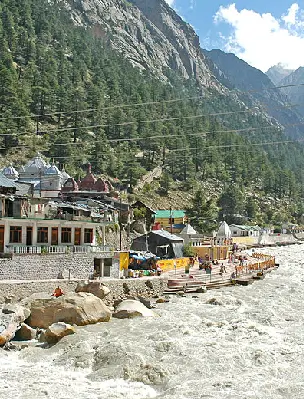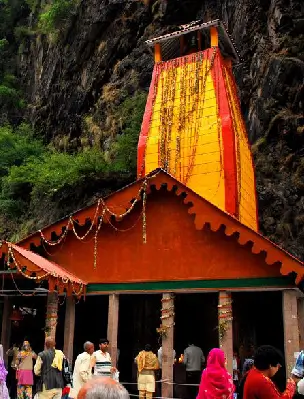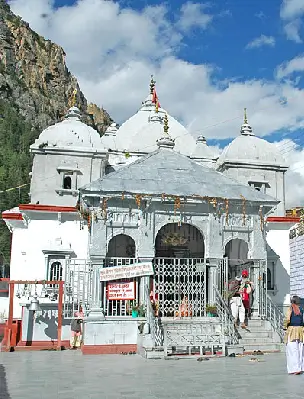Rishikesh Travel Guide
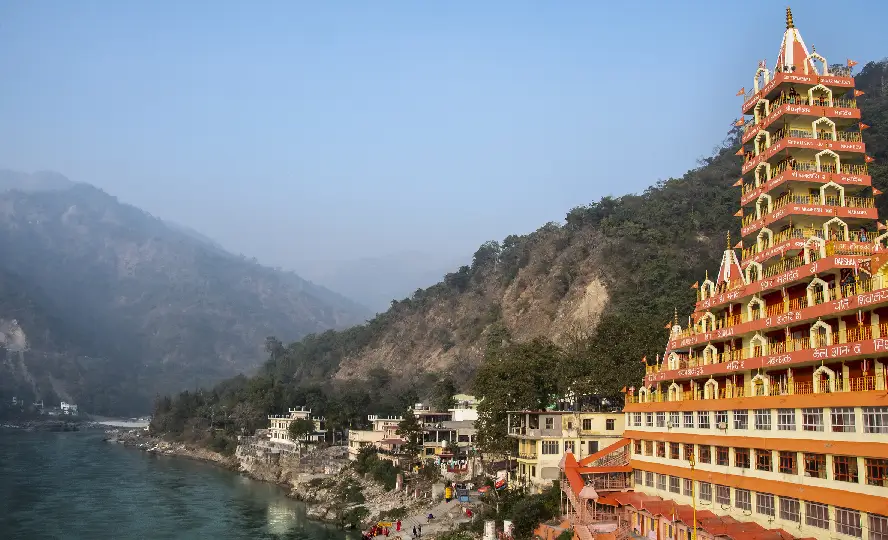
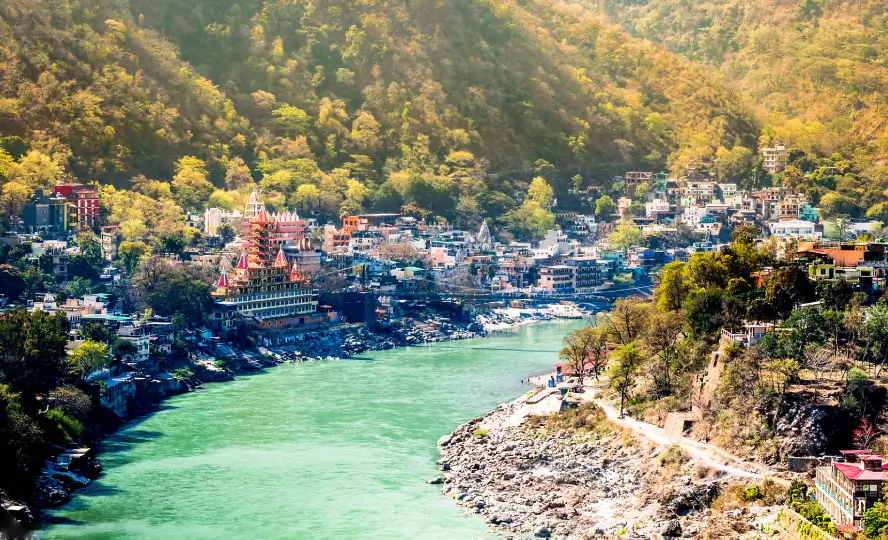
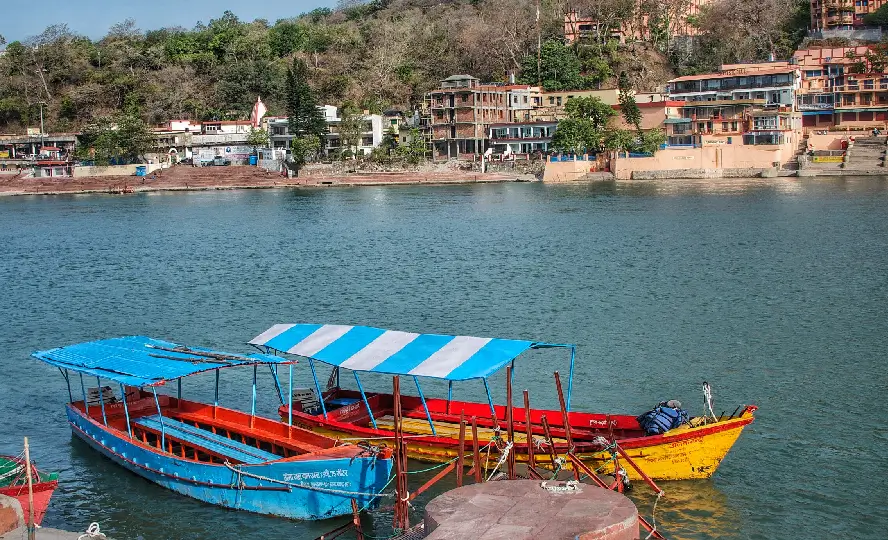
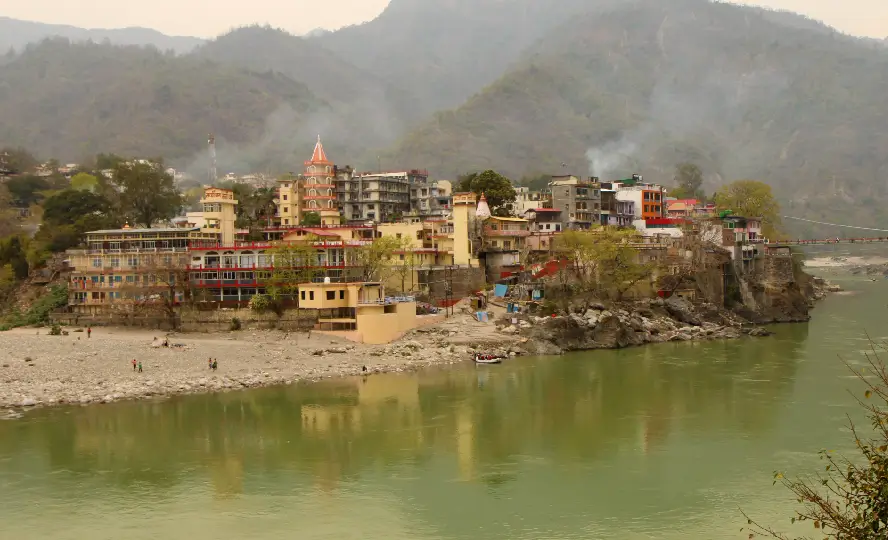
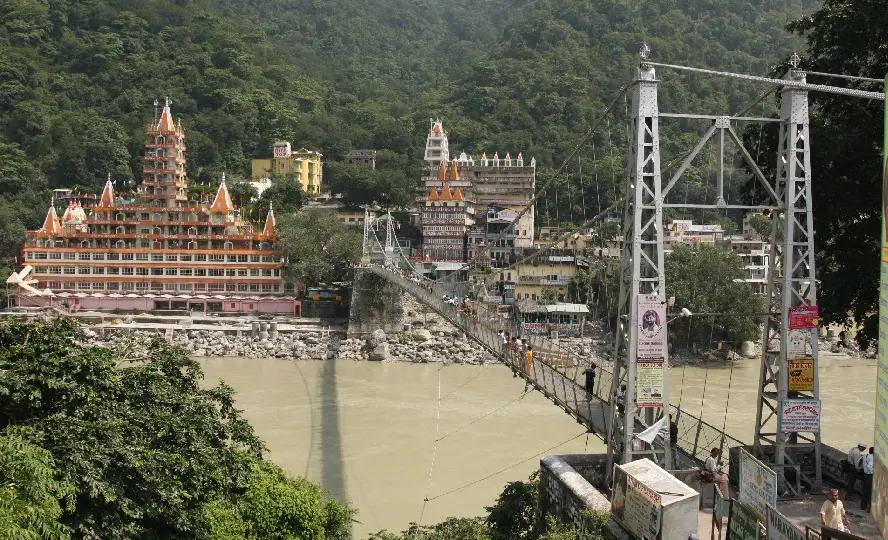
Rishikesh Travel Guide
Snuggled in the foothills of Himalayas in the enchanting state of Uttarakhand, Rishikesh is one of the most sought after holiday destinations in India. It is counted amongst the holiest cities in the world and is dotted with a number of ancient revered shrines that have been sitting here since times immemorial. People visit Rishikesh not only to pay their obeisance in these temples but also to absolve their sins by taking a dip in the sacred waters of the holy Ganges. They also visit it to experience the most visually enchanting spectacle of Ganga Aarti, which is held daily on the famous 'Triveni Ghat' during the evening. The hundreds of lighted earthen lamps floating on the surface of the river, the air filled with the fragrance of incense, the holistic chants echoing in the ears, and the sound of tinkling bells creating a magical atmosphere fills your heart with deep solace.
Rishikesh, in recent times, has successfully managed to style itself as the “Yoga Capital of the World”, and has to its kitty, innumerable meditation centres, yoga retreats and peaceful ashrams that offer spiritual and emotional wellbeing to the travellers. The action is mostly confined on western bank of the Ganges, where the picturesque settings and a peaceful ambience provide the most conducive environment to meditate or experience the expansion of the mind.
The word “Rishikesh” literally translates to "locks or hairs of a sage" and besides, sitting as an important Hindu pilgrimage centre in India, it also endears itself to thrill seekers and adventure junkies who flock here in huge numbers. From trekking, mountaineering, rock climbing and mountain biking to high cliff jumping, white water rafting and kayaking, it offers a lot of adventure opportunities.
Seeking more information on Rishikesh, particularly the best places to visit, popular sightseeing attractions and amazing things to do when on your holidays here? Well, our Rishikesh Travel Guide will leave you with all your questions answered. Just in case you are fancying a trip here, do check out our exclusive Rishikesh holiday, adventure and tour packages that have been specially crafted to perfection catering to every travel and budgeting needs.
Popular Tourist Attractions & Places to Visit in Rishikesh
Rishikesh is one of the most pious and spiritual cities in India, often called the Gateway to the Garhwal Himalayas. Considered a revered Hindu pilgrimage site, it serves as a base point to the holy Char Dham Yatra in Uttarakhand and is home to a number of religious sites, spiritually immersed places and yoga & meditation centres that make for the town's popular tourist attractions. Mentioned below are some of the town's most popular tourist places which should find a place in every traveller's itinerary.

Triveni Ghat : Situated on the confluence of three holy rivers, Ganga, Yamuna and the invisible Saraswati, Triveni Ghat is the most venerated and one of the most popular tourist attractions of Rishikesh. The ghat holds a great mythological significance and finds a prominent mention in various Hindu religious texts and epics of Ramayana and Mahabharata. It is said that Lord Krishna visited this holy spot when he was hurt by an arrow shot by Jara - a hunter. In fact, the ghat is considered the cremation ground of the Hindu god, while the waters are believed to be blessed with divine powers that absolve the sins of devotees and lead them to the path of salvation. The main highlight of Triveni Ghat is the evening Ganga Aarti, which is held every day during the sunset, and is accompanied with soulful Vedic chants, beating of the drums and divine music of the ringing bells from the temples nearby. The almost surreal aura can be attributed to the thousands of lit earthen lamps released on the sacred waters that create a visual spectacle to be etched forever in the onlooker's minds.
Shri Bharat Mandir : Located right in the heart of the city, Shri Bharat Mandir is counted among the most ancient and sacred temples of Rishikesh. Believed to have been built in the 8th century AD, the temple is a revered pilgrimage site and is dedicated to Lord Shri Hrishikesh Narayan, a kalyug reincarnation of the Hindu God, Vishnu. The presiding deity of the temple is carved out of Shaligram (the black Himalayan rock). Legend has it that Adi Guru Shankaracharya installed it in the sanctorum on the auspicious occasion of Basant Panchami. To mark this holy event, even today, every year on the day of Basant Panchami, the Shaligram is taken out for a sacred bath to the nearby Mayakund. The whole ritual of taking the Shaligram back to the temple for reinstallation is further followed by a grand procession through the city streets, and is attended by millions of devotees seeking blessings from God. Apart from Basant Panchami, there is a huge rush on the day of Akshay Tritiya when people throng here from far and wide to partake in 108 rounds of parikrama (circumambulation) of the temple, a ritual believed to fulfil all their wishes. It is also probably the only day when the feet of God are not covered and the parikrama is considered equivalent to the holy pilgrimage of Shri Badrinath Dham.
Rishikund : Situated in close vicinity to the Triveni Ghat, Rishikund is another popular must visit religious site in the temple town of Rishikesh. The sacred tank has many interesting legends associated with it, the most popular of which narrates that a sage named Kubz once performed a yagna here to please Goddess Yamuna, requesting her to permanently dwell at this site. Impressed with the sage's utter dedication, Yamuna carved its way out through this pond and filled it with its sacred waters. Another legend has it that Rishikund was the place where Lord Rama took bath in Treta Yuga. The Raghunath Temple located beside the kund testifies to this very legend. On a clear day, shadows of this holy sanctuary are reflected on the surface of the pond and create a captivating sight. Every day, devotees from different parts of the world flock to Rishikund in huge numbers, not only to pay their reverence to Goddess Yamuna but also to seek blessings from Lord Rama.
Ram Jhula : Located in Muni Ki Reti, Ram Jhula is a huge iron suspension bridge and a popular point of tourist interest in Rishikesh. Set up in the year 1986, the bridge is an iconic symbol of the holy city and connects the town's two busy districts - the Swarg Ashram on the western end, and the Sivananda Ashram on the eastern end. As evident by its name, the bridge is named after the Hindu God, Rama, and holds a great mythological significance in the hearts of Hindu patrons. Either side of the jhula is flanked by several ancient temples, peaceful meditation centres and vanaprastha grihas (retirement homes) where people come and revel in the soulful aura of the place, meditating or learning about the age-old Hindu culture. The busy market places in the near vicinity of the bridge are another great tourist attraction. Shoppers visiting it scout for books, souvenirs, small knick-knacks and a variety of religious paraphernalia. There are a number of old and popular food shops too in the region where foodies can spend some good time treating their palettes with some delicious and mouth-watering food. The bridge itself is famed as a beautiful vantage point in Rishikesh and provides the most panoramic views of the city, along with the fast flowing Ganges beneath. If you love seeing nature at its magical best, come here for a stroll in the evening and immerse your souls in the most hypnotic panorama of the setting sun painting the holy river in its crimson-golden hues. It truly is a sight to behold!
Swarg Ashram : Located at Gangapur, on the western bank of Ram Jhula,, surrounded by picturesque settings, Swarg Ashram, which literally translates to “Heavenly Abode”, is a little township in Rishikesh offering umpteen peace and serenity to the distressed souls. Considered one of the top places to visit in the city, it is built in memory of Swami Vishudhanand, a saint better known as Kali Kamli Wale by the locals, and houses several ashrams, sanctuaries and various places of worship. The area is always abuzz with spiritual activity, with countless yogis, sadhus and pilgrims engaged in various kinds of religious activities. In recent times, it has gained tremendous popularity among foreign nationals owing to its soulful aura and because it caters to the visitor's spiritual and emotional wellbeing. Visitors can go for yoga tours, take up meditation lessons or even learn about the essence of age-old Hindu culture and its very ancient science of Ayurveda, medicine & astrology. Note that the ashram area is replete with a number of dharamshalas, hostels and guesthouses, where tourists can easily avail the accommodation bookings either free of cost or at a nominal price.
Gita Bhawan : Gita Bhawan is a large complex which houses several discourse halls, meditation rooms and accommodation facilities and provides a comfortable stay to visitors free of charge. It is an abode of spirituality and attracts the spiritually inclined, luring them from different corners of the world to seek spiritual awareness and be part of various religious discourses based on Hindu texts and scriptures such as Bhagwat Geeta, Ramayana and Vishnu Purana. A part of the bhawan also functions as a museum, preserving the Vedic Hindu religious literature. The walls are engraved with many paintings and statues that depict characters from Hindu religious texts and epics. Amongst all, the one illustrating the famous Geeta Sandesh by Lord Krishna to Arjuna on a chariot in the infamous Kurukshetra War, draws the attention of many. Besides, a number of other sculptures and statues in the precincts are worth admiring and give detailed insight into ancient Hindu mythology. Also worth noting is that, the institute offers free ferry rides and a reasonably priced basic sattvic vegetarian meal twice a day. It also has a dispensary within that provides free of cost Ayurvedic treatments and medicines prepared from Himalayan herbs and pure waters of the Ganges.
Neelkanth Mahadev Mandir : Perched at an elevation of 1,330 metres on the Nar-Narayan Mountain Range, around 7 km. from Swarg Ashram, the Neelkanth Mahadev Mandir is one of the most popular religious destinations to visit around the holy town of Rishikesh. Surrounded with dense forests and nestled amidst picturesque locales, with gushing waters of rivers Pankaja and Madhumati flowing by, the temple is dedicated to the Hindu God Shiva, and makes for a famous pilgrimage site in the ancient city. A famous legend has it that the temple stands at the very place where in Puranic times, Lord Shiva consumed poison during the event of Samudra Manthan. The poison made Shiva's throat turn blue, which led him to be called Neelkanth (or the blue throated one). The temple has a very attractive and colourful architecture with the shikhara above the entrance, and outer walls depicting the entire story of manthan. The inner complex is equally beautiful and divine, and houses a sacred Peepal tree along with a natural spring where devotees take a holy dip before entering the main sanctorum, which houses the Neelkanth Mahadev in the form of a Shivling. While devotees flock here in large numbers to pay their obeisance round the year, it's the festival of Maha Shivratri, that in real terms, sees an exorbitant footfall. Thus, when it comes to Rishikesh tourism, missing out on this ancient and popular shrine is completely out of the question.
Rajaji National Park : Located on the foothill of Shivalik Mountain Ranges near Rishikesh, Rajaji National Park is a famous wildlife attraction in Uttarakhand. Named after the prominent leader of the Indian freedom struggle and the second and last governor-general of independent India, C. Rajagopalachari (Rajaji), the park spreads over a sprawling area of 820 sq. km. and boasts both a national park and tiger reserve within. It rich flora and fauna include more than 500 elephants, 250 leopards and about 12 tigers. Besides, a good number of spotted deer, sambhar, goral, barking deer and wild boars are often spotted around the park's dense thickets, providing for a visual delight. If you are someone looking forward to enjoy the wildlife and nature in its pristine form at Rajaji National Park, a jungle safari on a vehicle is the perfect choice. Rajaji National Park, in recent times, has also been acknowledged as a popular bird watching destination with over 500 species of birds, including both resident and migrants thriving in its thick forested lands. Few of the species that can often be spotted here include the great hornbills, oriental pied hornbills, great slaty woodpeckers, crested kingfisher, yellow bellied fantail and blue throated barbets, among many prominent others.
Best Time to Visit Rishikesh
Nestled on the foothill of Himalayan ranges, Rishikesh is a picturesque destination blessed with an enchanting scenery and a salubrious weather throughout the year. However, the best time and season to visit the holy destination depends on the type of activities tourists want to indulge in.
Summer Season (March - June)
Summers in Rishikesh start from the month of March and last until the end of June. The days during this timeframe are very hot and the average temperature soars to almost 35°C that makes sightseeing and religious exploration quite exhausting for some. Between April and the first week of May is a great time to enjoy a dip in the Ganges or try river rafting. Yoga enthusiasts should plan a trip in the month of March when the entire city is immersed in the joyous spirit of the “International Yoga Festival”.
Monsoon Season (July - September)
Beginning the month of July, monsoon arrives in Rishikesh, and is accompanied with frequent showers. The timeframe also coincides with the sacred Hindu month of Savan. During this time, thousands of pilgrims flock to the city to pay their reverence to the ancient shrine of Neelkanth Mahadev Temple.
Winters season (October - February)
The months from October to February constitute the winter season in Rishikesh. The average temperature during this timeframe fluctuates between 6°C and 20°C. Despite the slight chill, it is the favourite season for many travellers, offering them a perfect ambience to comfortably take the pilgrimage or embark on a sightseeing excursion. It's also an ideal time to go river rafting or nature camping along the banks of the holy Ganga River.
How to Reach Rishikesh?
-

By Air : Jolly Grant Airport, which is located at a distance of about 35 km. in the city of Dehradun, is the closest airport to Rishikesh. Several taxis and buses ply between the two places at regular intervals.
-

By Road : Rishikesh enjoys a good road network that connects it to Delhi, and various North Indian states like Haryana, Punjab, Uttar Pradesh, and some parts of Uttarakhand. Various state transport and private run buses ply regularly on these routes and offer a comfortable journey. Those who do not fancy a bus trip, however, can also choose to commute by car, which only takes about 6 to 7 hours, if travelling from Delhi.
-

By Train : The nearest railhead, Haridwar, is located approximately 25 km. from Rishikesh, and is linked to Delhi, besides the major Indian cities including Mumbai, Kolkata, Lucknow and Varanasi. Several regular express and superfast trains such as Shatabdi Express, Jan Shatabdi, AC Special and Mussoorie Express ply on these routes regularly. After arriving, tourists can hire a bus or a cab up to Rishikesh. Autos or tuk-tuks are also easily available at a reasonable price.
Where to Stay in Rishikesh?
The town of Rishikesh is spread out across two main parts, each separated by the holy Ganges flowing in between them. The location and the activities these two parts have on their palette, plays an important role while deciding on where to stay in the ancient holy city. If you are someone interested in yoga, meditation and spiritual offerings, you must look out for an accommodation on the western end, which is by far, the town's most happening area and has to it, several guesthouses, hostels and budget hotels, along with many humble ashrams that provide for a beautiful stay amidst picturesque and peaceful settings. If you are amongst those who love to have some taste of luxury while enjoying the pristine scenery and quiet at all times, the Tapovan area on the eastern side of Rishikesh, a little upstream from Lakshmana Jhula, is perfectly suited for you.
When it comes to choosing an accommodation in Rishikesh, the town has its fair share of offbeat options too, from secluded nature camp stays and serene forest guest houses to upscale independent jungle cottages and huts. Having said that, the best and most rustic choices are available in the nearby village of Shivpuri, which is considered the abode of surreal natural beauty, and lies just a few kilometers uphill from the main city centre of Rishikesh. The Ganga flows just close by the village and the range of Chilla Forest Reserve and Rajaji National Park borders it at a handy distance, making it the most ideal choice for adventurists too.
Other Activities to Do in Rishikesh

Sitting as a "Gateway to the Garhwal Himalayas" in Uttarakhand, Rishikesh is a destination that has something for every kind of traveller. Besides ancient temples, revered holy shrines and sacred bathing ghats, the city is home to numerous ashrams, wellness resorts and yoga & meditation centres that not only aid in spiritual learning but also lead you to the path of attaining inner peace and finding deep inner happiness. If you are someone who loves to enjoy the sheer tranquillity of the place, head to the Chaurasi Kutiya, more famously known as Beatles Ashram, where gorgeous psychedelic murals and dilapidated cave rooms still speak legendary tales of the once famous “The Beatles” band.
Rishikesh is not all just spiritualism and yoga, it's also a popular adventure destination with a wide array of heart-pounding offerings. From bungee jumping, trekking, rappelling & rock climbing to high cliff jumping, waterfall rappelling and kayaking, there are a range of adventure sports to choose from. White water rafting is by far the best adventure activity in Rishikesh, and leaves even the most avid of the rafters with the most adrenaline pumping experience.
Ayurveda is said to be born in India, and Rishikesh is no less than a holy grail when it comes to benefitting from the best Ayurvedic practices. This is where your mind, body and soul find umpteen peace and serenity. While the town is full of massage centres offering various Ayurvedic therapies, travellers, however, must check out for the authenticity and government-certification before booking their services.
A trip to Rishikesh is incomplete without gorging on its delicious food. The aroma of pooris, kachoris, jalebis and samosas greet you everywhere on the bustling streets of the city, and you just cannot resist yourself from treating your taste buds to a few of these exotic delicacies. For foodies interested in experimenting with something new, the outlets serving Ayurvedic and organic food are a must try. Being a holy city, the food available is purely vegetarian. Eggs, meat and alcohol are simply prohibited. However, if Indian flavour is not something you are after, there are endless cafes and restaurants in town serving Chinese and continental food stuff.
Rishikesh is also home to bustling markets that are full of ethnic and vibrant stuff. You can purchase a variety of things, from authentic rudraksha malas, trance & spiritual music CDs/DVDs, religious texts & books, astrology gems and bottles to containers carrying the sacred Ganga Jal.
Popular FAQs for Rishikesh
Rishikesh is famous for its spiritual charm and has long been an abode of numerous pilgrims, saints and sadhus who have been travelling here since ages to pay their reverence to the ancient holy shrines that dot the city. In recent times, it has transformed into the “Yoga Capital of the World” and has to its treasure, many meditation centres and yoga retreats that offer peace of mind and path to holistic wellbeing to the weary souls.
Every year during March, a week long Yoga Festival is hosted by the city, which has further boosted its popularity, placing it on the global wellness map. Well, besides spirituality and yoga, Rishikesh offers so much more. It attracts adventure lovers in large numbers, and has been aptly named the “White Water Rafting Capital of India”. The sunsets here are extremely beautiful, food is extraordinarily delicious and people are extremely warm and friendly.
Rishikesh is a famous Hindu pilgrimage destination which finds mention in several mythological stories dating back to Vedic times. It is where the River Ganga, the most sacred river to Hindus, leaves the Shivalik Hills and enters the plains of North India. The town is also the gateway and starting off point of the sacred Char Dham Yatra.
: Rishikesh sits almost 250 km. from Delhi. The best, quickest and most convenient way of reaching the holy town is taking a flight from Delhi Airport to Jolly Grant Airport in Dehradun. Once there, hire a cab which will take you to Rishikesh in less than an hour's time. However, if you wish to travel by road, board an Uttarakhand Roadways bus or hire a taxi, which will take close to six hours to drop you at Rishikesh.
Popular Tours
Book The Tour
Char Dham Temples
Hotels in Chardham Circuit
Char Dham Tour Packages
- Char Dham Yatra From Delhi
- Chardham Yatra From Mumbai
- Char Dham Yatra From Ahmedabad
- Chardham Tour with Hemkund Sahib
- Chardham Yatra by Helicopter
- Char Dham Yatra with Vaishno Devi & Amritsar
- Chardham Tour with Gomukh Trek
- Char Dham Packages From Bangalore
- Chardham Yatra From Chandigarh
- Char Dham Yatra with Auli
- Char Dham Yatra From Hyderabad
- Char Dham Yatra with Vaishno Devi, Jwalaji & Amritsar
- Char Dham Yatra From Chennai
- Chardham Packages From Bhopal
- Char Dham Yatra by Luxury Vehicle
- Char Dham Yatra with Satopanth Lake
- Char Dham Yatra with Panch Badri Tour
- Char Dham with Valley of Flowers
- Chardham Yatra with Mahavatar Baba and Nainital Tour
Do Dham Yatra
- Badrinath Kedarnath Yatra From Haridwar
- Badrinath Kedarnath Yatra
- Gangotri Yamunotri Yatra
- Gangotri Yamunotri Yatra from Haridwar
- Kedarnath Badrinath Yatra with Hemkund Sahib
- Kedarnath Badrinath Yatra with Valley of Flowers
- Kedarnath, Badrinathdham With Lake Of Nainital
- Yamunotri, Gangotri with Lake of Nainital
Ek Dham Yatra
- Badrinath Pilgrimage Tour
- Kedarnath Pilgrimage Tour
- Gangotri Pilgrimage Tour
- Yamunotri Pilgrimage Tour
- Kedarnath Yatra By Helicopter
- Badrinath Dham Yatra from Haridwar
- Badrinath Yatra with Hemkund Sahib
- Badrinath Yatra with Valley of Flowers
- Gangotri Dham Yatra with Gaumukh
- Kedarnath Dham Vasuki Tal Trek
